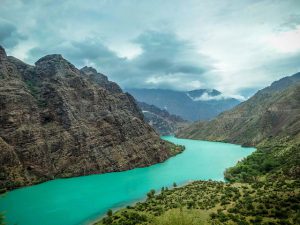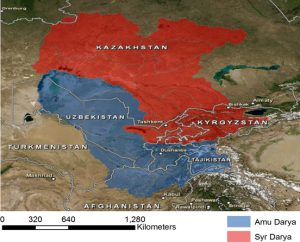The objective of this study was to support the “Central Asia Regional Energy Sector Vulnerability Study” led by Industrial Economics (IEc) and funded by the World Bank, by carrying out an expanded risk assessment for water availability and water related energy sector impacts in Central Asia. The work built on the existing tools that where developed previously for Syr Darya and Amu Darya basins. Various necessary extensions and enhancements of the tools were made to include the latest understanding of climatological and hydrological processes and include the latest planned investments in hydropower facilities and cooling water abstractions of the thermal power plants in the region.
The energy sector is sensitive to changes in seasonal weather patterns and extremes that can affect the supply of energy, harm transmission capacity, disrupt oil and gas production, and impact the integrity of transmission pipelines and power distribution. Most infrastructure has been built to design codes based on historic climate data and will require rehabilitation, upgrade or replacement in the coming years. This poses both a challenge and an opportunity for adaptation. Central Asia is one of the most vulnerable regions in the world. Expected climate impacts range from increased temperature (across the region), changes in precipitation and snow, greater extreme weather events, aridisation and desertification, health, and changes in water resources.

Energy and water are closely interrelated as water is used to generate energy (hydropower, cooling of thermal plants) but energy is also required to fulfil water needs (e.g. pumping, water treatment, desalination). Especially in Central Asia, meeting daily energy needs depends to a large extent on water. Guaranteeing sufficient water resources for energy production, and appropriately allocating the limited supply, is becoming increasingly difficult. As the region’s population keeps on growing, competing demand for water from other sectors is expected to grow, potentially exacerbating the issue.
The World Bank is committed to working with the governments of Central Asia to undertake analysis and to identify priorities in adaptation to climate change, including strengthening regional trade through a rigorous, transparent region-scale study. Therefore it currently undertakes a regional assessment to identify areas of possible coordination and possible transboundary impact. The overall project objective is to contribute to a better understanding of the challenges and opportunities for effective joint management of climate adaptation, contributing to the objective of the World Bank’s Central Asia strategy of energy and water security through enhanced cooperation. The results of this assessment should guide current and future decision-makers on options for investments in and management of power generation and transmission/distribution assets through enhanced cooperation.
 The objective of this study is to support the “Central Asia Regional Energy Sector Vulnerability Study” led by Industrial Economics (IEc) and funded by the World Bank, by carrying out an expanded risk assessment for water availability and water related energy sector impacts in the region. The work will build on the existing tools developed previously for Syr Darya and Amu Darya basins. Various necessary extensions and enhancements of the tools will be made to include the latest understanding of climatological and hydrological processes and include the latest planned investments in hydropower facilities and cooling water abstractions of the thermal power plants in the region.
The objective of this study is to support the “Central Asia Regional Energy Sector Vulnerability Study” led by Industrial Economics (IEc) and funded by the World Bank, by carrying out an expanded risk assessment for water availability and water related energy sector impacts in the region. The work will build on the existing tools developed previously for Syr Darya and Amu Darya basins. Various necessary extensions and enhancements of the tools will be made to include the latest understanding of climatological and hydrological processes and include the latest planned investments in hydropower facilities and cooling water abstractions of the thermal power plants in the region.
Publicaciones relacionadas
2014 - FutureWater Report 196
Regional Risk Assessment for Water Availability and Water-related Energy Sector Impacts in Central Asia
Hunink, J.E., A.F. Lutz, P. Droogers



